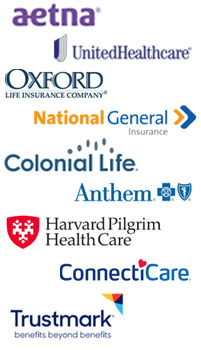
Employee Benefits
 The Foresight Group prides itself in providing superior customer service after the plan is in place. Consider us to be an extension of your Human Resource Department except we are not paid by you but rather by the carriers we represent. The Foresight Group is licensed and appointed in to provide coverage for your organization with the following carriers:
The Foresight Group prides itself in providing superior customer service after the plan is in place. Consider us to be an extension of your Human Resource Department except we are not paid by you but rather by the carriers we represent. The Foresight Group is licensed and appointed in to provide coverage for your organization with the following carriers:
Aetna
Anthem Blue Cross and Blue Shield of CT
Colonial Life & Accident
ConnectiCare
Harvard Pilgram
National General
Oxford
Trustmark
United Healthcare

The process of finding the right plan for the right premium can be difficult. The Foresight Group would like to make that job a little easier for you.
Some Information on Employee Benefits
Employee benefits are defined as a form of compensation paid by employers to employees over and above regular salary or wages. Employee benefits come in many forms and are an important part of the overall compensation package offered to employees.
Employee benefits are defined as indirect, non-cash, or cash compensation paid to an employee above and beyond regular salary or wages. Some employee benefits are required by law. For example, employers are required to make payments on employees’ behalf for Social Security and Medicare. Employers must also pay for unemployment benefits on employees’ behalf. Other benefits are offered by employers to improve the company’s recruiting and retention efforts. These benefits include health insurance, life insurance, paid vacation, flexible work schedules and workplace perks like on-site snacks and meals.
Here is a list of popular employee benefits in the U.S.:
• Remote work
• Healthcare
• Paid time off
• Flexible hours
• Paid family leave
• Four-day work week
• Free food in the office
• Student loan assistance
• Pet insurance/pet friendly offices
• Fitness perks
In addition to the different types of employee benefits, companies must evaluate how to structure the benefit. Employers have two different ways to structure, contribute, and offer employee benefits:
- Organizationally: These are benefits structured in “traditionally” They are generally employer-owned and employer-selected. Examples include a traditional health insurance policy, retirement pension or 401(k), or formal wellness program.
- Employee-oriented: This benefit structure focuses on the employee as an individual. With this approach. With this type of benefit employees use employer-funded dollars to customize their benefits using technology.

